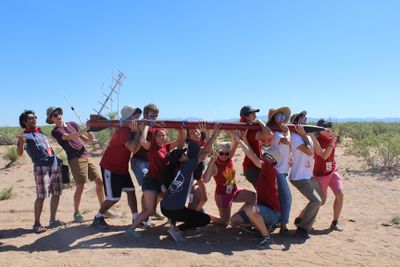Difference between revisions of "IREC 2018"
Jump to navigation
Jump to search
| Line 32: | Line 32: | ||
=The Competition= | =The Competition= | ||
| + | |||
| + | =Documentation= | ||
| + | |||
| + | * [https://drive.google.com/file/d/1B-4ndZNTqcyyGEI-J9Cef_EhLjfIpOm6/view?usp=sharing Project Technical Report] | ||
| + | * [https://drive.google.com/file/d/1JBI0Ohp3OFxwmPIfnDCpdROMip6v7sKL/view?usp=sharing Poster] | ||
| + | * [https://docs.google.com/drawings/d/1FZ-EO2cmcVqKG4EX4ICNpjDG-7YpyGjMEO3sUQ1J7eA/edit?usp=sharing Fast Facts Card] | ||
| + | * [https://drive.google.com/file/d/11V0K0Fe9YUkwESrhL8_F12ssUUUeGvvl/view?usp=sharing SRADio Podium Presentation Slides] | ||
| + | * [https://drive.google.com/file/d/1nuDhLZtP00u9kX1kKX7aCkomgPamfNCM/view?usp=sharing SRADio Podium Presentation Proposal] | ||
Revision as of 21:12, 8 July 2018
IREC 2018 was the second SSI IREC team to participate in the Intercollegiate Rocketry Engineering Competition, placing second in the 30k commercial off-the-shelf motor category. The rocket featured an avionics bay with a long-distance radio system, a reduced-diameter recovery system, a fiberglass airframe with a carbon fiber fin lay-up, a powered decoupling mechanism, and a software-defined GPS payload.
